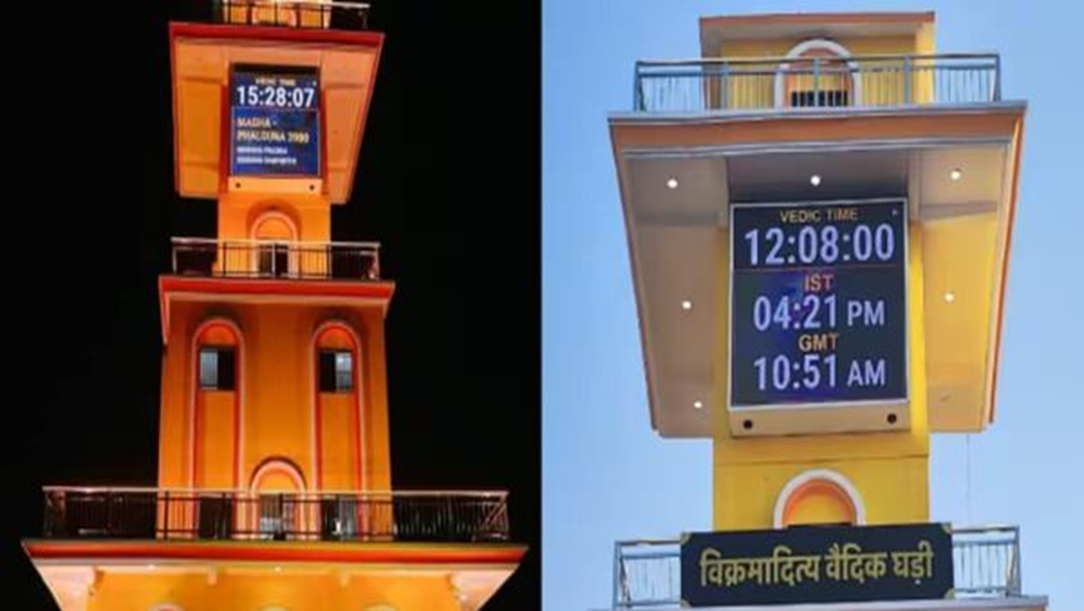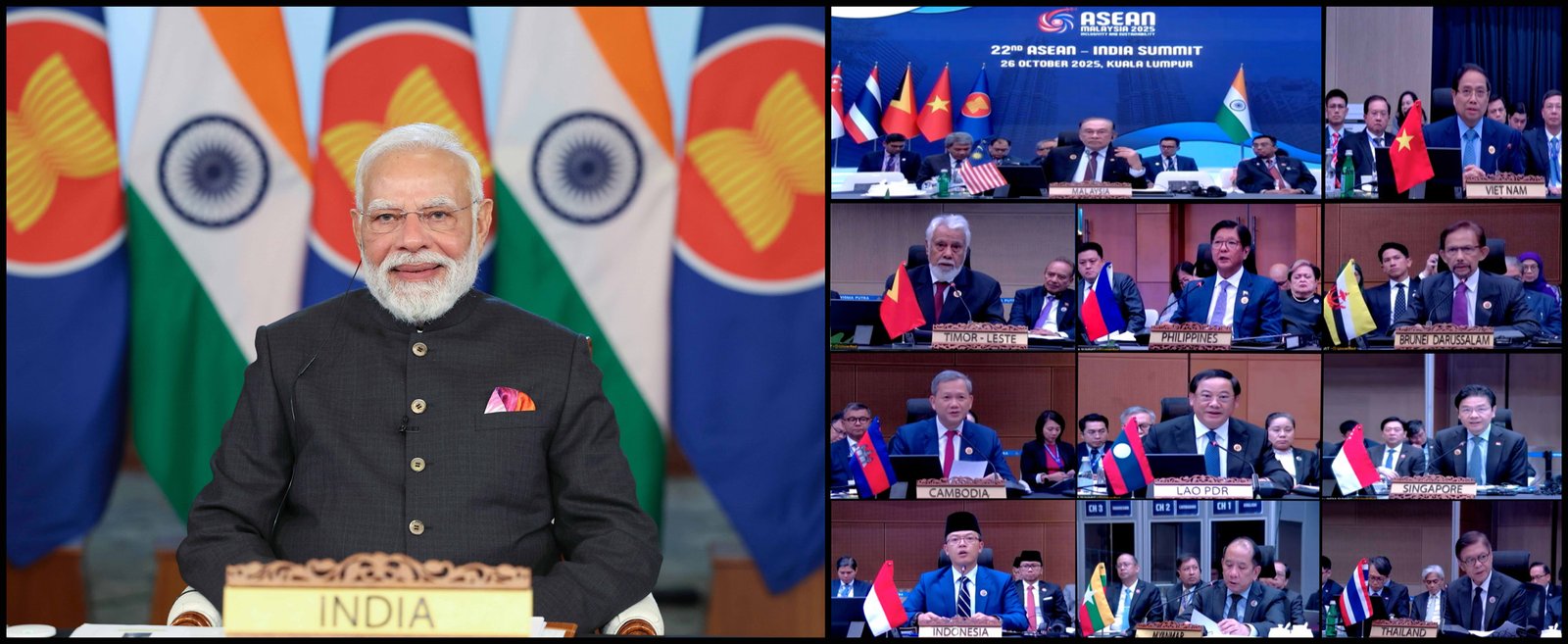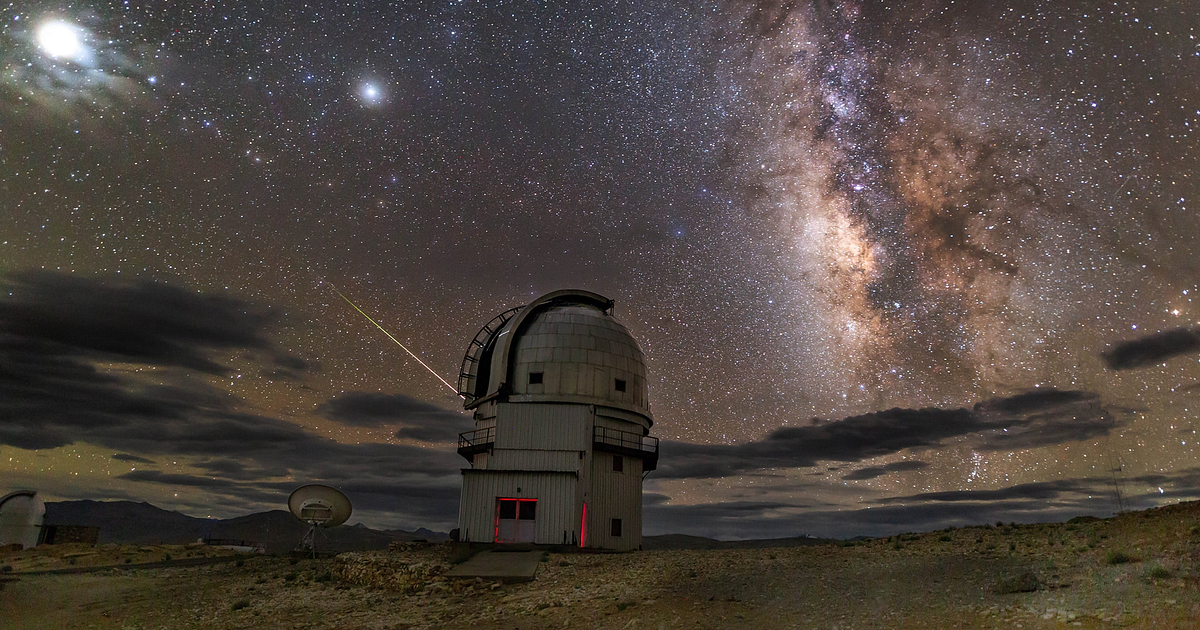- On February 29, 2025, Prime Minister Narendra Modi virtually inaugurated the Vikramaditya Vedic Clock in Ujjain, Madhya Pradesh.
- Towering 85 feet high near the Government Jiwaji Observatory inside Jantar Mantar, this clock stands as a powerful symbol of India’s rich astronomical heritage and its integration into the modern world of timekeeping.
A Timepiece Rooted in the Panchang
- Unlike conventional clocks, the Vikramaditya Vedic Clock is based on the Indian ‘Panchang’ (traditional almanac).
- It calculates time using ancient Indian astronomical principles and provides detailed information including:
- Planetary positions
- Shubh Muhurat (auspicious timings)
- Nakshatras (lunar mansions)
- Ghati (Indian time units)
- Moon phases and festivals (Parva)
- IST and GMT indicators
- Its unique operational mechanism calculates time from sunrise to sunrise, dividing that period into 30 parts, with each “hour” consisting of 48 minutes.
- This forms a 30-hour day, starting at 0:00 with the moment of sunrise — unlike the fixed 24-hour solar time model used in modern systems.
Ujjain: The Historical Nerve Center of Time
- Ujjain’s selection as the clock’s location is historically significant. Over 300 years ago, it was a global hub for time and astronomical calculation.
- The city lies along the Tropic of Cancer and was once used to determine the world’s standard time.
- Its legacy is preserved through the Jantar Mantar observatory, one of five built by Maharaja Jai Singh II between 1724 and 1735.
Modern Timekeeping: GMT, IST, and the Role of the International Date Line
- In contrast to the Vedic time system, Greenwich Mean Time (GMT) and Indian Standard Time (IST) represent standardized, globally accepted systems of measuring time.
- GMT is based on mean solar time at the Royal Observatory in Greenwich, London, and is the foundation of the global time zone system.
- IST is GMT+5:30 and is the time standard used across India.
- To support global synchronization, the International Date Line (IDL) plays a crucial role. Situated roughly along the 180° longitude, the IDL is an imaginary line that marks the change of one calendar day to the next.
- Crossing the IDL from west to east subtracts a day, while going east to west adds a day.
- This man-made construct enables the world to function coherently across multiple time zones and international boundaries.
- By contrast, traditional Indian systems like the one revived by the Vikramaditya Vedic Clock focused on local celestial events such as sunrise, moonrise, and planetary transits, making them highly accurate for local use but not designed for global synchronization.
Jantar Mantar: The Legacy of Ancient Indian Astronomy
- The Vikramaditya Clock is installed within the Jantar Mantar of Ujjain — one of five astronomical observatories built across India:
- Jaipur: Home to the world’s largest sundial
- Delhi: Located on Sansad Marg
- Ujjain: Integrated with the Vedic Clock
- Varanasi: A heritage site of astronomical significance
- Mathura: Now mostly in ruins
- These structures exemplify the scientific achievements and cosmological understanding of India during the late Mughal era.
Blending Tradition and Modernity
- The Vikramaditya Vedic Clock is more than just a timepiece. It represents a conscious effort to revive ancient knowledge and blend it with modern technology.
- By juxtaposing the Indian traditional system with globally accepted standards like GMT, IST, and the International Date Line, the clock serves as a bridge — reminding the world of India’s contribution to astronomy while embracing the demands of contemporary global synchronization.
The inauguration of the Vikramaditya Vedic Clock is a landmark moment for cultural and scientific heritage. It brings the world’s attention back to India’s timekeeping traditions and encourages a deeper appreciation of how civilizations have measured time differently. In a world dominated by atomic clocks and digital systems, Ujjain’s new timekeeper reminds us that time is not just mechanical — it’s cosmic, cultural, and deeply human.





